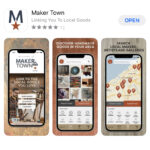
I. Introduction to Hyper Personalization in Marketing
II. Benefits of Hyper Personalization in Customer Engagement
III. Strategies for Implementing Hyper Personalization in Marketing Campaigns
IV. Challenges of Hyper Personalization and How to Overcome Them
Introduction to Hyper Personalization in Marketing
Picture this: you’re scrolling through your favorite online store, and suddenly, you see a pair of shoes that catch your eye. Not just any shoes, but the exact style and color you’ve been dreaming of. How did they know? That’s the power of hyper personalization in marketing.
Hyper personalization is like having a personal shopper who knows your style, preferences, and needs better than you do. It’s about delivering tailored content and experiences to each individual customer, based on their behavior, interests, and demographics.
In today’s digital age, customers expect a personalized experience. They want to feel understood, valued, and appreciated by the brands they interact with. Hyper personalization allows companies to create meaningful connections with their audience, driving engagement, loyalty, and ultimately, sales.
So, how does hyper personalization work? It involves collecting and analyzing data from various sources, such as website interactions, purchase history, social media activity, and more. By understanding customer behavior and preferences, marketers can create targeted campaigns that resonate with each individual, leading to higher conversion rates and customer satisfaction.
The key to successful hyper personalization lies in using advanced technologies, such as artificial intelligence, machine learning, and data analytics. These tools enable marketers to automate the process of personalization at scale, making it easier to deliver relevant content to the right person at the right time.
In the competitive landscape of marketing, hyper personalization is no longer a nice-to-have but a must-have. Brands that embrace this trend and prioritize customer-centric strategies are more likely to stand out, build trust, and drive long-term success.
Benefits of Hyper Personalization in Customer Engagement
Have you ever received a personalized email with your name in the subject line or recommendations based on your browsing history? That’s hyper personalization in action!
But what exactly are the benefits of hyper personalization in customer engagement? Let’s dive in.
1. Enhanced Customer Experience
Imagine receiving tailored messages, offers, and recommendations that cater to your specific needs and preferences. This level of personalization makes customers feel valued and understood, leading to a more positive and memorable experience.
2. Increased Customer Loyalty
By delivering personalized content, businesses can build stronger relationships with their customers. When customers feel like a brand truly understands and cares about them, they are more likely to remain loyal and continue engaging with the brand over time.
3. Higher Conversion Rates
Personalized marketing messages are more relevant to individual customers, increasing the likelihood of them taking the desired action, whether it’s making a purchase, signing up for a service, or engaging with content. This, in turn, leads to higher conversion rates and improved ROI for businesses.
4. Improved Customer Retention
When customers receive personalized communication that resonates with them, they are more likely to stay engaged with the brand. This leads to increased customer retention and reduced churn rates, ultimately contributing to long-term business success.
5. Better Insights and Data Collection
Hyper personalization allows businesses to gather valuable data on customer preferences, behaviors, and interactions. This data can be used to further refine marketing strategies, tailor future campaigns, and make more informed business decisions.
In conclusion, the benefits of hyper personalization in customer engagement are clear. By delivering personalized experiences that resonate with individual customers, businesses can enhance customer satisfaction, increase loyalty, drive conversions, improve retention, and gain valuable insights. So, if you’re looking to take your marketing efforts to the next level, consider incorporating hyper personalization into your strategy. Your customers will thank you for it!
Strategies for Implementing Hyper Personalization in Marketing Campaigns
So, you’ve heard about hyper personalization in marketing and you’re eager to jump on board. But how exactly do you go about implementing this powerful strategy in your campaigns? Let’s break it down for you with some actionable strategies:
- Collect Data Wisely: The foundation of hyper personalization lies in data. Make sure you are collecting the right kind of data – customer preferences, behaviors, purchase history, etc. Invest in tools that can help you gather and analyze this data effectively.
- Segment Your Audience: Once you have the data, segment your audience into smaller, more targeted groups based on their demographics, behavior, interests, etc. This will allow you to tailor your messages and offers to each group more effectively.
- Create Dynamic Content: Gone are the days of one-size-fits-all marketing. With hyper personalization, you need to create dynamic content that can be adjusted based on the preferences of each individual. Use AI and machine learning to automate this process.
- Use Personalized Recommendations: Leverage customer data to provide personalized product recommendations. Whether it’s through email, website pop-ups, or social media ads, recommend products that are tailored to each customer’s interests and past purchases.
- Implement Real-Time Marketing: Keep up with your customers in real-time by sending personalized messages based on their interactions with your brand. Whether it’s a follow-up email after a purchase or a reminder about items left in the shopping cart, real-time marketing can make a big impact.
By implementing these strategies, you can take your marketing campaigns to the next level and create a more personalized and engaging experience for your customers. Remember, hyper personalization is all about building stronger relationships with your audience and providing them with relevant and valuable content. So, don’t be afraid to experiment and tailor your approach based on the feedback you receive. Good luck!
In the world of marketing, hyper personalization has become a powerful tool to engage customers on a deeper level. However, with great power comes great responsibility, as there are challenges that come with implementing hyper personalization in marketing campaigns. Let’s dive into some of these challenges and discuss how to overcome them.
**1. Data Privacy Concerns**
One of the biggest challenges of hyper personalization is the issue of data privacy. In today’s digital age, consumers are becoming increasingly wary of how their personal data is being used by companies. It is important to be transparent about the data you are collecting and how it will be used. Make sure to comply with data protection laws and regulations to build trust with your customers.
**2. Overload of Information**
With the abundance of data available, it can be tempting to use every piece of information to personalize marketing campaigns. However, bombarding customers with too much information can lead to information overload and ultimately disengage them. Focus on using relevant data that adds value to the customer’s experience rather than overwhelming them with irrelevant details.
**3. Striking a Balance**
Finding the right balance between personalization and intrusiveness can be a delicate task. While customers appreciate personalized recommendations and offers, they also value their privacy. It is essential to strike a balance between being helpful and being invasive. Respect your customers’ boundaries and avoid crossing the line into creepy territory.
**4. Technology Limitations**
Implementing hyper personalization requires sophisticated technology and data analytics capabilities. Small businesses may struggle to invest in these tools, making it challenging to compete with larger companies that have the resources to personalize their marketing efforts. Look for affordable and user-friendly solutions that can help you achieve hyper personalization without breaking the bank.
**5. Ensuring Accuracy**
Inaccurate data can lead to misguided personalization efforts that can alienate customers rather than engage them. It is crucial to regularly audit and update your data to ensure its accuracy. Utilize data validation tools and techniques to clean and organize your data effectively. By maintaining accurate data, you can deliver personalized experiences that resonate with your customers.
Overcoming these challenges requires a thoughtful and strategic approach to hyper personalization. By prioritizing data privacy, avoiding information overload, striking a balance between personalization and intrusiveness, investing in the right technology, and ensuring data accuracy, you can create personalized marketing campaigns that drive customer engagement and loyalty.
So, the next time you embark on a hyper personalization journey, remember to navigate these challenges with care and consideration. By addressing these obstacles head-on, you can unlock the full potential of hyper personalization and take your marketing efforts to the next level.
“`html
Challenges of Hyper Personalization and How to Overcome Them
- Data Privacy Concerns
- Overload of Information
- Striking a Balance
- Technology Limitations
- Ensuring Accuracy
“`










Comments